David McFall R.A. (1919 - 1988)
Sculptor
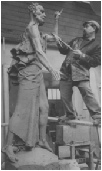
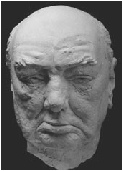
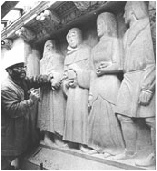
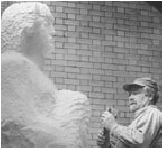

1962/1 - 1st Earl of Balfour KG OM PC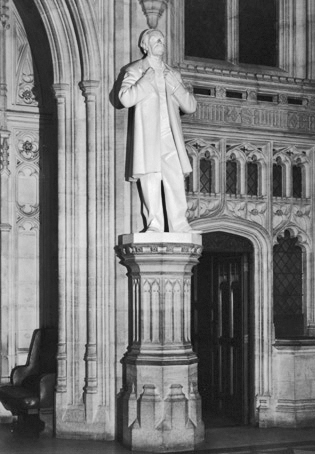
French Limestone (Lary’s Roche) - 7'3" high (the stone was originally for the Earl Lloyd George statue by Sir Jacob Epstein who had died)
Memorial Statue for the House of Commons Private Members Lobby
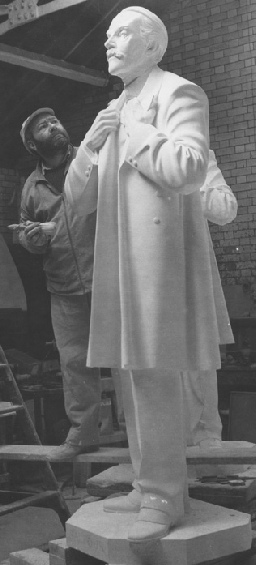
McFall first modelled Balfour in clay and then carved the final limestone statue.
The work was commissioned in July 1959 and completed in 1962 being unveiled on 9th May 1962.
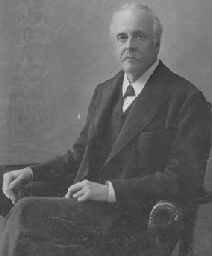
Arthur James Balfour (1848-1938) 1st Earl of Balfour Conservative Prime Minister
1902-05. Balfour began his political career as a member of Parliament in 1874. His
was the nephew of Lord Salisbury and in 1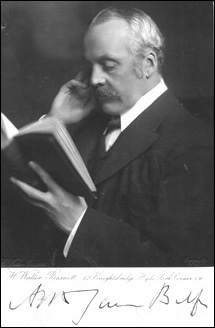 886 joined his cabinet as chief secretary
for Scotland. In 1887 he became secretary for Ireland. He took a firm stand in opposition
to home rule for Ireland and earned the nickname "Bloody Balfour" among Irish nationalists.
In 1891 he became First Lord of the Treasury in Salisbury's second ministry and held
the same post in his third government when he also became leader in the Commons.
In 1902 Balfour succeeded his uncle as prime minister and during his short time in
office passed significant legislation including education and Irish land reform bills.
He was responsible for the "entente cordiale," which established cordial relations
between the governments of Britain and France (1904), forming a basis for their alliance
in World War I. That same year he created the Committee of Imperial Defence (CID)
to plan for the Empire's defence and establish budgets for the military and navy.
Balfour's government resigned the following year. Disputes over Joseph Chamberlain's
proposals for tariff reform split the party and led to the Conservatives losing the
general election (1905) and Balfour losing his seat in Parliament. He retained party
leadership until 1911. Balfour continued to serve in government, joining the Asquith
ministry in 1915 as First Lord of the Admiralty. Under David Lloyd George, as foreign
secretary (1916-19) he issued the Balfour Declaration in 1917, a letter to Lord Rothschild
in which he stated the governments support for "the establishment in Palestine of
a homeland for the Jewish people". His declaration led to the foundation of Israel
in 1948. He was also involved in the negotiations ending World War I and signed the
Treaty of Versailles between the allies and Germany, 1919. He was lord president
of the council under Lloyd George (1919-22) and again in Baldwin's government (1925-29).
He represented Britain in the League of Nations (1920-22).
886 joined his cabinet as chief secretary
for Scotland. In 1887 he became secretary for Ireland. He took a firm stand in opposition
to home rule for Ireland and earned the nickname "Bloody Balfour" among Irish nationalists.
In 1891 he became First Lord of the Treasury in Salisbury's second ministry and held
the same post in his third government when he also became leader in the Commons.
In 1902 Balfour succeeded his uncle as prime minister and during his short time in
office passed significant legislation including education and Irish land reform bills.
He was responsible for the "entente cordiale," which established cordial relations
between the governments of Britain and France (1904), forming a basis for their alliance
in World War I. That same year he created the Committee of Imperial Defence (CID)
to plan for the Empire's defence and establish budgets for the military and navy.
Balfour's government resigned the following year. Disputes over Joseph Chamberlain's
proposals for tariff reform split the party and led to the Conservatives losing the
general election (1905) and Balfour losing his seat in Parliament. He retained party
leadership until 1911. Balfour continued to serve in government, joining the Asquith
ministry in 1915 as First Lord of the Admiralty. Under David Lloyd George, as foreign
secretary (1916-19) he issued the Balfour Declaration in 1917, a letter to Lord Rothschild
in which he stated the governments support for "the establishment in Palestine of
a homeland for the Jewish people". His declaration led to the foundation of Israel
in 1948. He was also involved in the negotiations ending World War I and signed the
Treaty of Versailles between the allies and Germany, 1919. He was lord president
of the council under Lloyd George (1919-22) and again in Baldwin's government (1925-29).
He represented Britain in the League of Nations (1920-22).
References: 
(1) The Guardian 18/4/62;
(2) Evening Standard 9/4/62: "Sculptor David McFall hopes to finish off his statue of Lord Balfour by April 18 ... it stands over seven foot tall ... It will be erected in the Member's Lobby during the Easter recess and unveiled ... by Harold Macmillan ... on May 9. Balfour was hewn out of a French limestone called Lary's Roche. "It carved very nicely" says McFall. The limestone was originally intended to become a statue of Lloyd George by Epstein. But Epstein died and now Lloyd George has been entrusted to Uli Nimptsch."
(3) Condolence letter: "... where the Balfour 'broken foot' is now a required item in any child's guided tour of the Palace of Westminster"
(4) News cutting "John London" "I can tell you that the cost of the statue of the Earl of Balfour, Prime Minister from 1902-5, which was unveiled by Mr Macmillan in the Lobby of the House of Commons this afternoon was £10,250. The fee of the sculptor, Mr David McFall, who was engaged for three years on the work, was £10,000. The memorial, carved from French limestone at his Kennington studio, shows Balfour as though speaking at the despatch box, holding the lapels of his frock coat. It stands 7' 3" high on a plinth.
(5) The Times 1st April 1960
(6) There are several files held at The National Archives which cover the statue of Lord Balfour which stands in the Members’ Lobby of the House of Commons and was the work of the sculptor David McFall. WORK 20/276 opens in 1957 with the forming of a committee to deal with this memorial statue and the choosing of a sculptor. A short list was drawn up covering Sir Charles Wheeler, William McMillan, Gilbert Ledward, Maurice Lambert, David Wynne and David McFall. At a later stage, Bainbridge Copnall and Cecil Thomas were added to the list. David McFall was finally chosen and an agreement drawn up in July 1959. The fee was £ 10,000. There was then much discussion as to whether the statue be in bronze, stone or marble and when this file closes the decision was still unresolved. The death of Jacob Epstein who was working on the statue for the Members’ Lobby of Lloyd George had caused various complications and it was decided that a new committee be formed this committee to cover both the Lloyd George and Balfour statues. File WORK 20/311 covers the period February 1960 to April 1962 and just follows the setting up of this new committee and the various meetings which took place. File WORK 20/313 covers other matters which arose during the period May 1957 to April 1962 by which time the statue was ready and file WORK 20/329 covers the unveiling on 9th May 1962. McFall was born in Glasgow on 12th December 1919. Early studies were at colleges in Birmingham . He then enrolled at the Kennington School of Art studying there from 1941 to 1945 and became a lecturer there in 1956. McFall’s works include the statues of Pocahontas at Cassell's, Red Lion Square, of St Paul and St Bride in St Bride's, Fleet Street, and of Sir Winston Churchill at Woodford Green.
All rights reserved
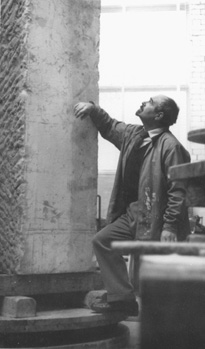
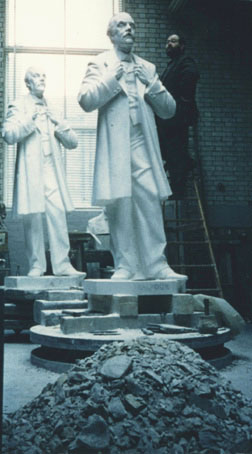
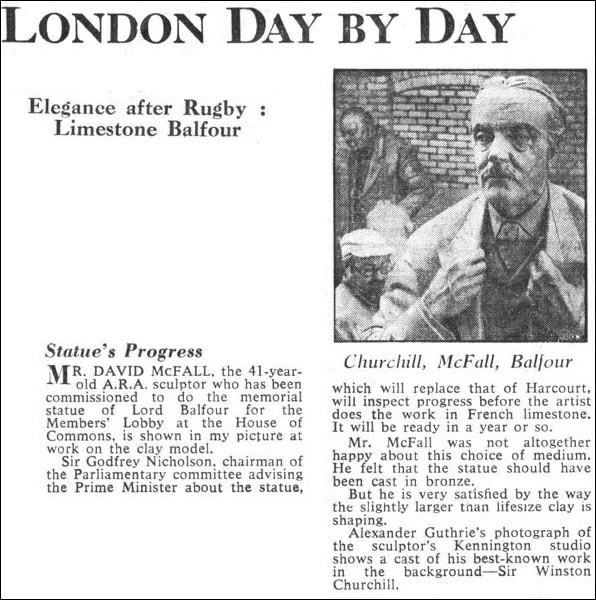



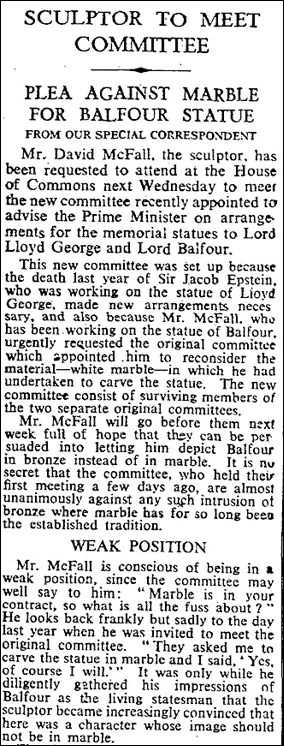
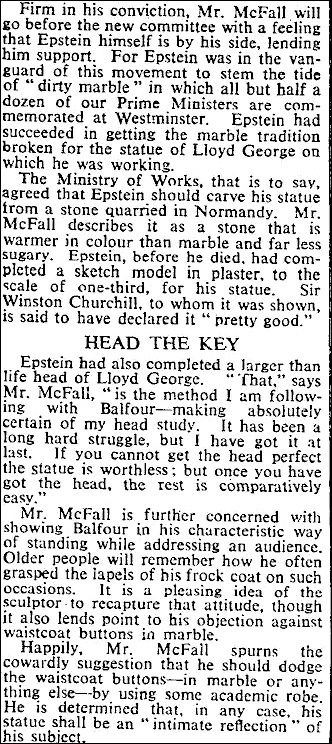
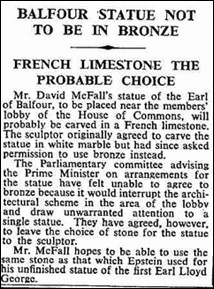
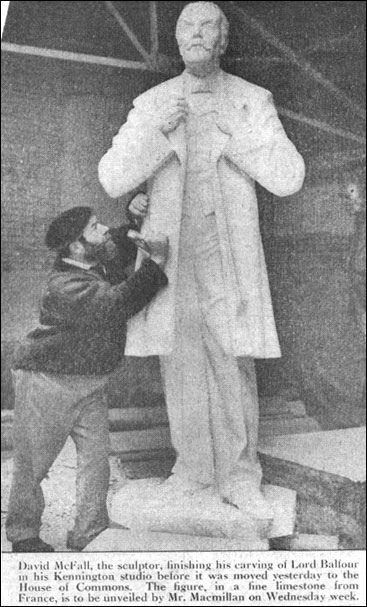
| Animals |
| Busts and Heads |
| Children |
| Churchill studies |
| Lettering |
| Medals coins plates |
| Reliefs |
| Stone carvings |
| Contemporary British Artists |
| On Epstein |
| Picasso |
| The art of portrait sculpture |
| Letters |
| Palliser |
| Son of Man |
| Press |
| Obituaries |
| Memorial address |